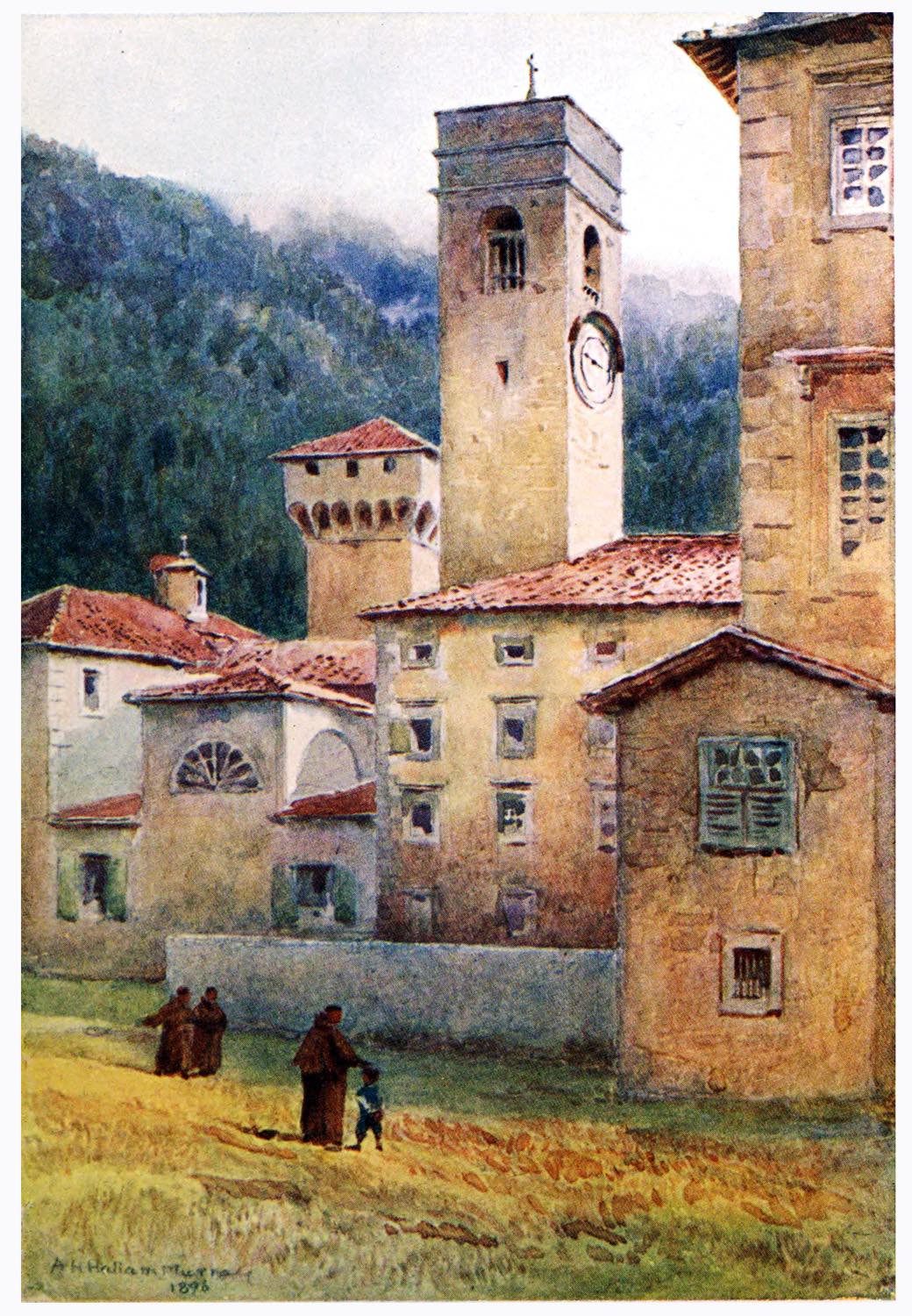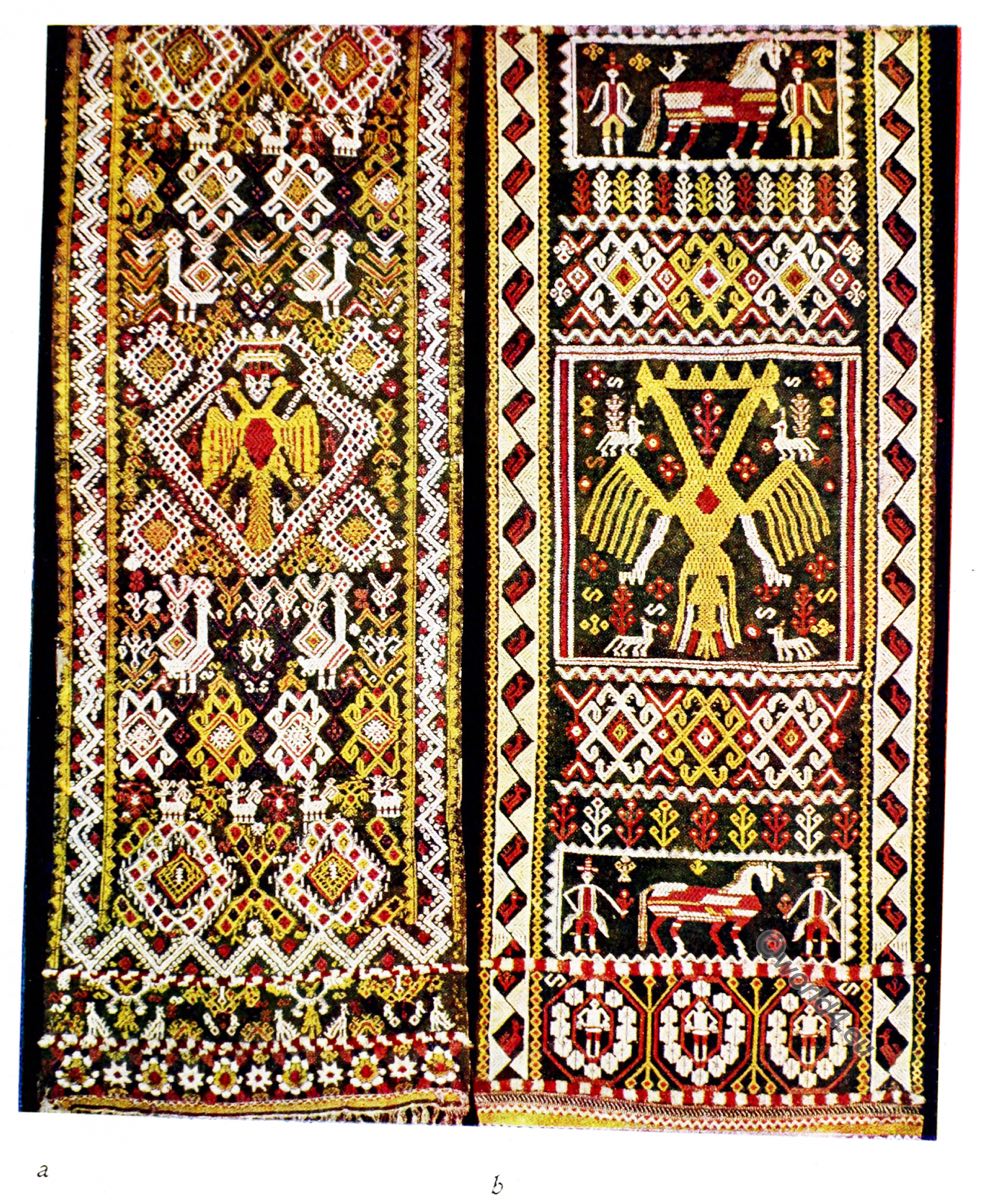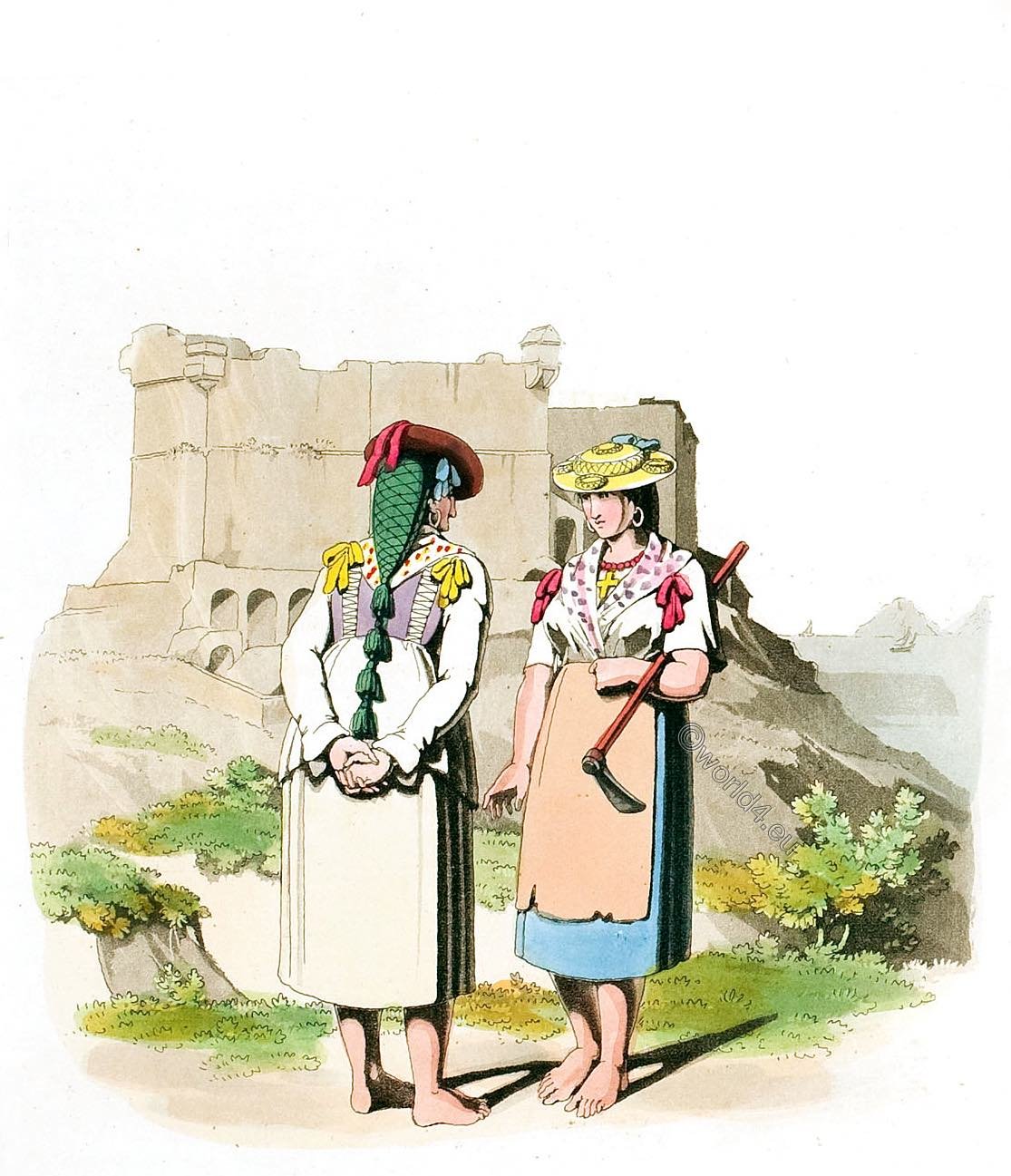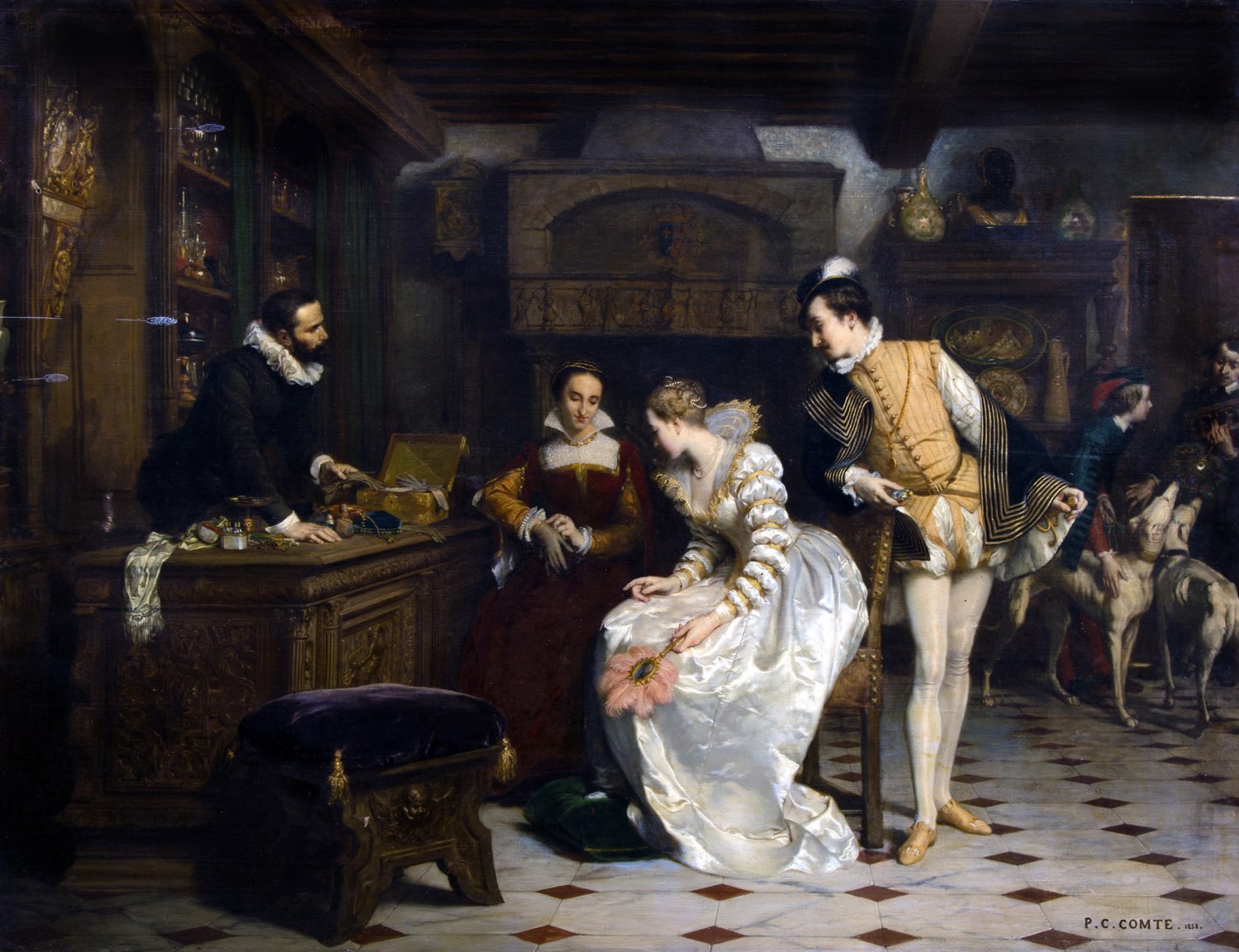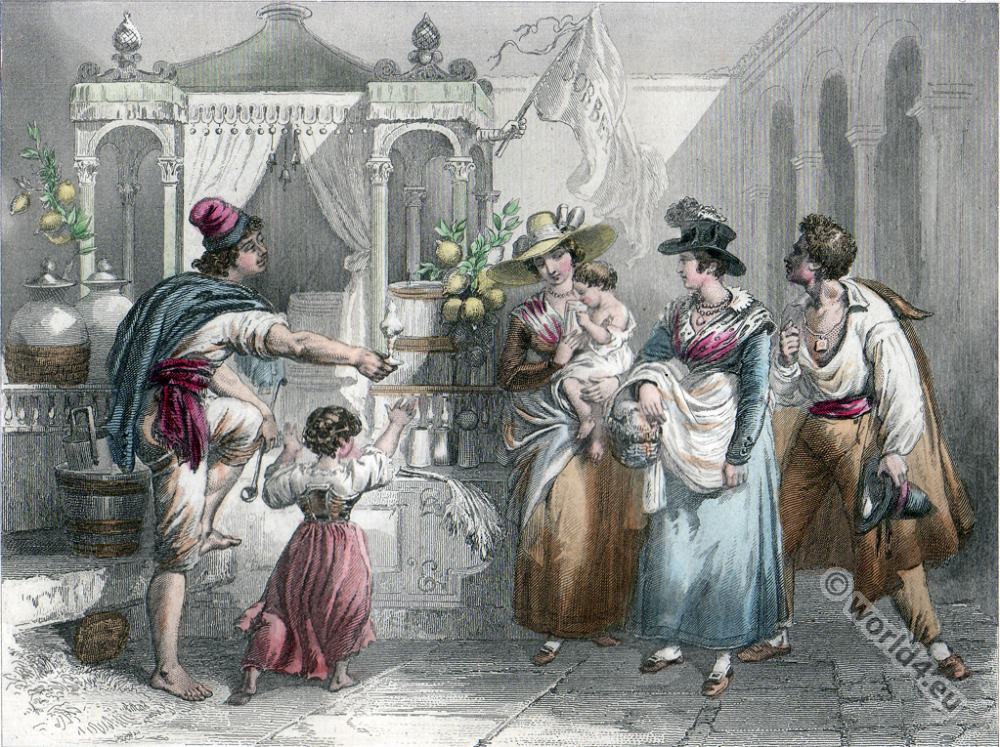
FLORENCE AND FIESOLE.
ITALY.
"Let us from the top of Fiesole, Whence Gallileo's glass, by night observed The phases of the moon, look round, below, On Arno's vale, — and on thee. Beautiful Florence; all within thy walls, Thy groves and gardens, pinnacles and towers. Drawn to our feet" Rogers.
Florence, fair Florence, the Athens of Italy, the centre of refinement, is seated in a valley more smiling, sunny, and luxuriant than the sombre beauty which it shelters. Amongst the infinity of agreeable accidents that belong to this place of pleasure, none is more delightful that the circumstance of its approaches. Descending from the hills, the traveller beholds the most beautiful city in Europe, with its domes and towers, and spires and cupolas, and picturesque chimneys, rising above roofs embosomed in groves of olives and cypress, and intersected by hedges of myrtle and of lauristinus, so graceful in full bloom.
The Arno, famed in poetic song, runs rapidly, cheerfully, eternally through the vale, and entering, divides the city into two nearly equal parts, which are connected by four bridges of classical designs. As the eye ranges over the prospect, and looks with or against the current of the river, the view is equally adorned with numberless villas and luxuriant shrubberies; which continue in uninterrupted possession of this golden vale, from the river’s bank to the foot of the bold Apennines, that close in the panorama.
Such is the exterior beauty of the Val d’Arno, graces more properly Tuscan than Florentine, (Toscana than Firenze,) for they are not confined to the limits of this happy valley, but distributed with a lavish bounty of nature over all Etruria. And here in a cloudless atmosphere, and smokeless sky, where distant objects are seen with a distinctness to which the northern European is a stranger, the imagination is more intensely worked on by the scene, which embraces in its bosom the wonders of ancient and modern art, a concentration of objects calculated to gratify the senses, and refine the taste. “Here,” said an Interesting traveller, “I felt as if I could take up my abode for ever, but confused with a multitude of objects, I knew not on which to bend my attention, and ran childishly by the ample ranks of sculptures, like a butterfly in a parterre, that skims before it fixes, over ten thousand flowers.”
It was while gazing upon Florence from Fiesole one evening in the spring-time, that Henry Matthews thus soliloquized upon the climate of Italy, — “An evening, or night, in an Italian villa, at this season of nightingales and moonlight, is a most delicious treat. How could Shakespeare write as he has done without having been in Italy?
Some of his garden scenes breathe the very life of reality. And yet if he had been here, I think he would not have omitted all allusion to the fire-fly, a little fluttering insect, that adds much to the charm of the scene. The whole garden is illuminated by myriads of these sparkling lights, sprinkled about with as much profusion as spangles on a lady’s gown.” The beauty of the fire-fly, and the magic effect of its movements in the silence of an Italian night, were not first observed or recorded in the ” Diary of an Invalid “; just twenty years before its publication, a brother tourist wrote, — “Myriads of fire-flies sparkled amongst the shrubs on the bank. I traced the course of these exotic insects by their blue light, now rising to the summits of the trees, now sinking to the ground, and associating with the vulgar glow-worm.”
Florence is a depository of all that is elegant, interesting, and perfect in art; the Val d’Arno is a garden of the most beautiful objects in nature, from which Fiesole is selected, from peculiarity of feeling, not invidiousness in choice. The hill on which the ancient Faesulae once stood, is elevated, rocky, and picturesquely broken. The ascent, a paved road, overhung by gloomy cypresses, is marked with inscribed crosses, and other emblems of the Saviour’s passion: and, on the highest point of the eminence, wrapped in groves of pines, ilex, and cypresses, is a venerable convent of Franciscan monks. Hence may be viewed a variegated scene of villas, vineyards, cottages, gardens, and tall towers, buried amidst shrubs and olives, while the distant plains and dense forests are tinted with the beautiful azure which Velvet Breughel has so happily imitated from such Elysian landscapes. In this venerable abbey, his learned companions assembled around the accomplished Matteo Bosso, one of the most perfect scholars of his age, and at the frugal board of the reverend sage, many eminent men passed the best-spent moments of their existence, like the attic nights of Plato, or the intellectual hours of TuUy and his friends at Tusculum.
The abbey, which occupies the site of the ancient Faesulte, owes its foundation to the Medicean family, and is no incomplete emblem of the splendid tastes and projects of that illustrious house. The corridors command a multiplicity of landscapes: every window presents a different scene, and as the day declines, every moment changes the coloring of the whole. Leopold once led his brother Joseph to this venerable spot, to show him the grandeur of his dominions, and a Latin inscription, placed permanently in the walls, records the imperial visit.
Faesulae, once celebrated for its powers of divination and skill in the interpretation of omens, is now a lonely, but beautiful village, adorned with an ancient and curious cathedral, retaining episcopal honors, and still enjoying its classic name. When Etruria submitted to the irresistible arms of consular Rome, Faesulae was colonized by order of Sylla; but he was a fierce despot, and his followers were mere victims of his capricious tyranny. It must not, therefore, excite surprise, however it may occasion regret, to be informed, that the colonists of this fascinating locality, were afterwards found amongst the ruffian army of Catiline. Faesulae does not appear to have participated in the expiring struggles of Italy for freedom, but to have enjoyed a calm independence until the commencement of the eleventh century, when, in an unequal contest with Florence, she was reduced to submission, and the principal inhabitants compelled to migrate to that fair city.
Thus was Fiesole the cradle of Florence, and one of the most venerated names associated with her history, identified lastingly with the fortunes and beauties of the more modern city.
Milton dwells complacently upon the charms of this scene — Politian too has panegyrised them — Picus dwelt here — Lorenzo was its frequent visiter — and Niebhur, in the enthusiasm of antiquarian lore, mistook the fragments of a Roman theatre at Fiesole of no very ancient date, for the residue of some colossal Etrurian edifice.
Source: The Rhine, Italy, and Greece in a series of drawings from nature by George Newenham (1790?-1877). London: Fisher 1841.

